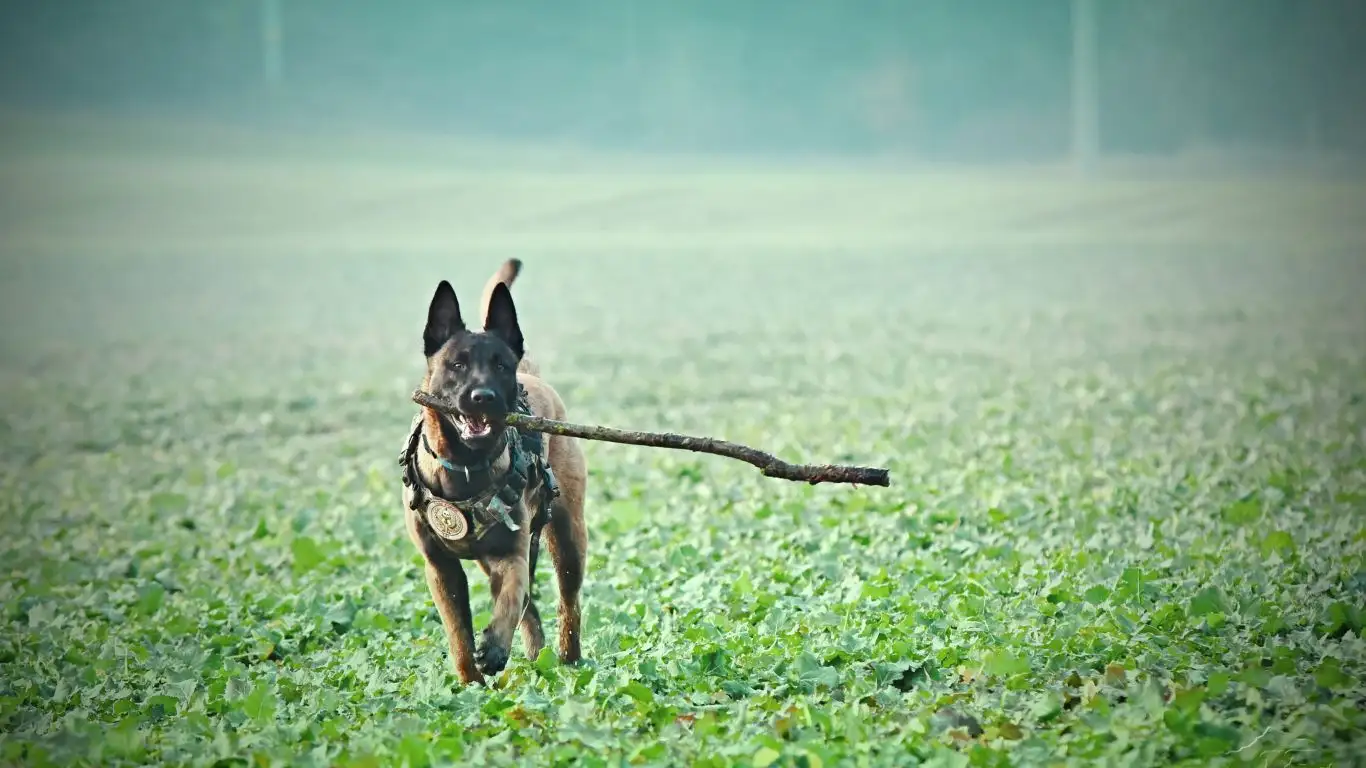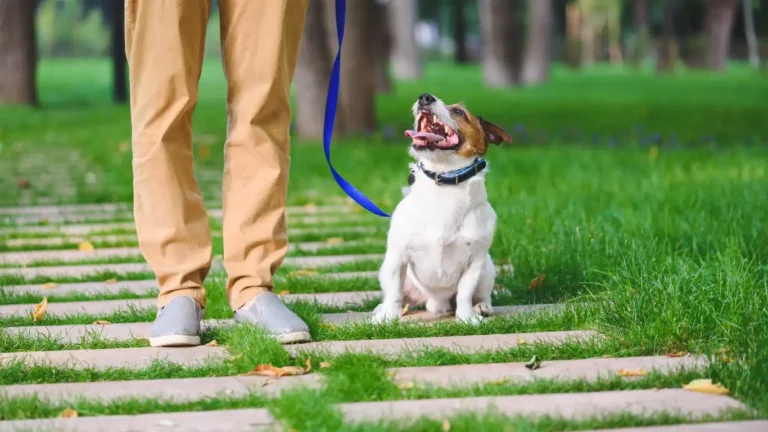How to Train a Dog to Understand Different Command Tones: Boost Your Dog’s Responsiveness Now!
If you’re like me and you’ve spent years training dogs, you know that getting them to respond well isn’t just about using the right commands—it’s about using the right tone. How to train a dog to understand different command tones is one of those things that can make all the difference in your dog’s behavior. Whether you’re working with a hyperactive pup or an older dog that needs a little more patience, the tone of your voice plays a huge role in how your dog perceives and responds to your commands.
Why Command Tones Matter in Dog Training

We’ve all seen those movies where the dog trainer shouts commands in a strict tone, and the dog listens immediately. In reality, it’s a bit more nuanced than that. Dogs, like humans, pick up on different vocal cues and tones, and they associate those sounds with certain behaviors. Training a dog to understand different command tones is not only about the pitch of your voice but also about how you use those tones consistently. Over time, your dog will learn to distinguish between when you’re being firm, when you’re being encouraging, and when you’re simply offering praise.
From my experience as a Canine-Assisted Therapy Trainer, I can tell you that one of the first things I teach any handler is the power of tone. We’ve worked with dogs of all breeds, sizes, and temperaments, and I can assure you—getting the tone right is half the battle. Whether you’re teaching basic commands like “sit” and “stay,” or more advanced ones like “come” or “heel,” your tone will guide your dog through the learning process.
How Dogs Perceive Tone: A Deeper Look
Before we dive into the specifics of training, let’s talk a little more about how dogs perceive tone. Dogs don’t understand words in the same way we do. Instead, they are much more attuned to the emotional tone behind what we’re saying. For example, if you tell your dog “sit” in a soft, upbeat tone, they’re likely to feel more relaxed and willing to follow your command. On the other hand, if you say “sit” in a harsh or sharp tone, the dog might think you’re scolding them, even if that’s not your intention.
Another thing I’ve noticed with dogs in therapy settings is that some dogs are more sensitive to certain tones than others. Some dogs respond best to a calm, gentle voice, while others thrive on a more authoritative command. This can depend on the dog’s past experiences, breed tendencies, and personality. So, it’s essential to be mindful of your dog’s reactions and adjust accordingly.
The Key Command Tones You Should Use
- Firm Command Tone: This is the “no-nonsense” tone. It’s used for commands like “sit,” “stay,” or “down.” It’s important that your voice conveys authority but isn’t too harsh or frightening. A firm tone signals that you mean business, and your dog needs to listen.
- Encouraging Tone: Think of this as your “good dog” voice. When teaching new tricks or reinforcing positive behavior, you want to use a friendly and motivating tone. This helps create a positive association with the behavior you’re rewarding.
- Praise Tone: This tone is essential for reinforcing good behavior. A high-pitched, enthusiastic voice works wonders when your dog successfully follows a command. The excitement in your voice lets them know they did something right.
Using the right tone for the right command is crucial, and trust me, dogs pick up on it quickly. I’ve had several moments where a small change in my tone led to immediate results. If I was working with a therapy dog in a hospital setting, I would often switch between a firm tone for focus commands and a soft, calm tone when offering praise or encouragement. This helped the dog maintain a calm and steady demeanor while also ensuring that they were always on the job when needed.
How to Train Your Dog to Respond to Different Command Tones

Alright, now that we’ve established why tone is important, let’s talk about how to train your dog to respond to different command tones. It’s all about consistency and positive reinforcement. When I train dogs, I focus on teaching them the difference between my firm voice and my friendly, praising voice. Here’s how you can start:
1. Start with Basic Commands
It’s important to have a solid foundation of basic commands before you introduce tonal variations. Commands like “sit,” “stay,” and “come” should be mastered in a neutral tone before you start varying your voice. Once your dog consistently responds to these commands, it’s time to move on to tone training.
2. Gradually Introduce Variations
Start using your firm tone for certain commands, and observe how your dog reacts. When they follow the command, praise them with an enthusiastic tone. If they don’t respond immediately, use a gentle but firm correction with your tone, repeating the command. The key here is not to mix up your tones, so your dog doesn’t get confused.
It’s all about clarity and consistency. If you’re always firm when saying “sit,” for example, your dog will eventually understand that this tone means they need to listen closely. And when you switch to a praise tone after they follow through, they’ll learn that this is the reward for good behavior.
3. Use the Tone-Command Pairing Regularly
The more you pair certain tones with specific commands, the faster your dog will learn. During training sessions, mix things up by practicing the same command with different tones to reinforce their understanding of the variations. Just like with any training technique, repetition is key.
As you progress, you’ll notice that your dog begins to respond faster and more accurately to the tone of voice you use. This is when the magic happens—the tone itself becomes a part of the command, and your dog learns to not only understand what you’re asking but also how to react to the emotional cues in your voice.
4. Be Patient and Observant
Training a dog to understand different command tones takes time and patience. Don’t be discouraged if your dog doesn’t get it immediately. Every dog is different, and some might take longer than others to adjust to tonal cues. Be patient, and always observe their responses carefully. When in doubt, seek guidance from a professional dog trainer or a Canine-Assisted Therapy expert if you’re working with a specialized dog.
In my experience, the dogs that respond best are the ones whose handlers are genuinely engaged and consistent with their training. If you’re patient and take the time to build a strong bond with your dog, you’ll see results much faster.
Advanced Techniques for Training Dogs with Tone

Now that we’ve covered the basics of how to train a dog to understand different command tones, let’s take it to the next level. Advanced training techniques are all about fine-tuning your dog’s ability to respond to various emotional cues in your voice. It’s not just about getting them to sit or stay anymore; it’s about understanding when to use tone to shape more complex behaviors and reactions. As a Canine-Assisted Therapy Trainer, I’ve seen how tone training can be a game-changer, especially in more nuanced settings like therapy work or service dog training. Let’s dive into some more advanced methods you can incorporate into your training routine.
Using Tone to Manage Stress and Anxiety
One thing that is often overlooked when training dogs is the effect of different tones on a dog’s emotional state. As I’ve worked with therapy dogs, one of the most powerful things I’ve learned is how to use tone not just to command, but also to manage stress and anxiety. Dogs are very sensitive to their handlers’ emotions, and they can pick up on stress or tension in the voice.
For example, if a dog is nervous in a new environment, you can use a soft, reassuring tone to help them relax. On the flip side, if they’re in a situation where they need to focus and stay calm (such as during a therapy session or in a public space), you might use a firm yet gentle tone to encourage attentiveness without causing anxiety.
Understanding the Emotional Context Behind Tone
When you’re working on training different commands with tone, it’s essential to understand the emotional context behind each tone. Your dog will read your tone as an emotional cue, and just like humans, dogs react differently depending on how they’re feeling. A positive, enthusiastic tone is great for praise, but what about when you need to give a firm correction?
It’s important to strike the right balance between firmness and kindness. A correctional tone should never feel like punishment but rather a redirection. For example, if your dog is about to jump up on a visitor and you need them to stop, a sharp “no” followed by a calm, assertive tone can be more effective than a repeated “down” command in a frantic voice. Dogs can sense desperation, and they tend to respond better to clear, confident commands.
Consistency is Key
Consistency is a cornerstone of dog training in general, but it’s especially important when it comes to training dogs to respond to different command tones. Dogs are creatures of habit, and they thrive on routine. This means that using the same tone consistently with specific commands will help reinforce the association in your dog’s mind.
One of the biggest mistakes I see in dog training, especially among new handlers, is the lack of consistency. If you’re using a friendly, encouraging tone one day and a harsh, critical tone the next, your dog is going to get confused. Over time, this inconsistency can lead to frustration and slower progress. That’s why I recommend sticking to a routine and ensuring that you’re always using the same tone for the same command. Your dog needs to know what to expect from you.
Integrating Tone into Real-World Scenarios

Okay, you’ve got your dog responding well to different tones in a controlled setting. But what happens when you take your training to a more unpredictable environment? The real test of tone-based training comes when you integrate it into real-world scenarios—whether that’s in a crowded park, during a therapy session, or while you’re out on a walk.
When I’m training therapy dogs, I always make sure to practice commands in various environments. Dogs can become distracted easily, especially when they’re not used to outside stimuli. In these situations, the tone of your voice is even more important because it needs to cut through the chaos and grab your dog’s attention.
1. Training in Busy Environments
In busy environments, like parks or crowded streets, the ability to use tone effectively becomes a crucial skill. A firm, confident tone can help refocus your dog, even when they’re distracted by all the smells, sounds, and sights around them. I always recommend starting in a relatively calm place, but as your dog becomes more responsive, start introducing distractions. For example, practice the “sit” command with a firm tone when other dogs are nearby, or practice “stay” in a place with a lot of movement, like a pet-friendly store.
The key here is to remain calm yourself. Your dog will pick up on any anxiety in your voice, which can make them more stressed or less responsive. If your dog starts to get distracted, simply repeat the command with your firm but calm tone. Eventually, they’ll learn to ignore the distractions and focus on you.
2. Managing Social Situations
Social situations can be tricky, especially if your dog tends to get overly excited around people or other dogs. If you’re trying to teach your dog to stay calm when meeting new people or animals, a friendly, low, and soothing tone can help. This tone reassures your dog and tells them that there’s no need for over-excitement. I use this technique frequently with dogs who have a strong prey drive or anxiety in social situations, and it’s a great way to reinforce calm behavior without feeling like you’re scolding them.
Also, remember to reward calm behavior. Praise your dog with a cheerful tone when they remain composed around new people or other dogs. The more you reward calm behavior, the more your dog will start to understand that maintaining composure leads to positive outcomes.
3. Practicing Tone in High-Stress Situations
Sometimes, you’ll find yourself in high-stress situations—whether it’s a sudden loud noise, a quick movement, or an emergency situation. In these moments, being able to rely on your tone to keep your dog calm and focused is invaluable. One of the things I love about working with therapy dogs is how adaptable they become in these kinds of situations. They know that when I give a firm, commanding tone, it’s time to focus. And when I switch to a more gentle, calm tone, it’s time to relax.
The more you practice in varying situations, the more your dog will develop this level of responsiveness to your tone. Over time, it becomes second nature, both for you and your dog.
Adjusting Tone Based on the Dog’s Needs
Every dog is different, and some might need more time than others to understand different tones. For example, more sensitive dogs may need a gentler, more reassuring tone during training, while high-energy dogs might respond better to a firmer tone to get them to focus. It’s up to you as the handler to adjust your tone based on your dog’s individual needs and temperament.
Some dogs, especially those with a history of trauma or negative experiences, might be more sensitive to certain tones. In these cases, be extra mindful of your voice and try to focus more on calm, reassuring tones to build trust and confidence. This is something I’ve learned over the years, especially when working with rescue dogs who have come from difficult backgrounds.
Ultimately, the goal is to have a well-rounded dog who can understand and respond to various tonal cues in any environment. By consistently practicing and adjusting your tone, you’ll be able to help your dog achieve this level of understanding, which can lead to a more harmonious relationship between you and your canine companion.
Evaluating Your Dog’s Progress with Command Tones

By this point, your dog is likely starting to respond to different command tones with more ease and precision. But as with any training, the real work begins once you start to assess progress and continue refining the results. As a Canine-Assisted Therapy Trainer, I’ve found that being able to evaluate the dog’s response to tone is crucial for adjusting training strategies and keeping things on track.
One of the first things I do when assessing progress is look at consistency. Is your dog reliably responding to the firm tone when asked to sit or stay? Are they calming down more quickly with your soothing voice in stressful situations? And, most importantly, are you seeing improvement over time? Remember, training is a marathon, not a sprint. The key is gradual, consistent progress. So, how do you evaluate that?
Signs Your Dog Is Making Progress
Every dog is different, but there are some key signs that indicate your dog is successfully learning to understand different command tones:
- Increased responsiveness: Your dog is starting to respond quicker to commands in various tones—whether it’s a firm “sit” or a gentle “stay.”
- Confidence in behavior: You’ll notice your dog is becoming more confident in their reactions, knowing exactly what to do when they hear certain tones. This is especially important in therapy and service dog work.
- Reduced confusion: Your dog isn’t hesitating as much when they hear different tones. They start to distinguish between what’s a firm command and what’s praise.
As you see progress, be sure to continue reinforcing the correct behavior. The more your dog learns to associate a particular tone with a certain action, the quicker they will pick it up in the future. Don’t be afraid to tweak your approach a little if you notice your dog is still unsure about a particular command or tone.
Handling Setbacks During Training
It’s totally normal to hit a few bumps along the way during dog training, especially when teaching your dog to understand different command tones. In fact, setbacks are part of the process. Dogs, like humans, can have “off” days, and they might not respond as well as they did during previous training sessions. If you find your dog is regressing or becoming confused, it’s important to stay patient and adjust your approach.
One thing I’ve found useful when dealing with setbacks is to return to the basics. If a dog starts getting confused between a firm “stay” and a calm “settle,” for example, I’ll go back to practicing each tone separately before reintroducing them together. This often helps reset the dog’s understanding. Another trick I use is adding a short pause after the command. This gives the dog time to process the tone and decide what action they should take.
Also, don’t forget to give yourself some grace. As handlers, we can sometimes get frustrated if progress isn’t as quick as we’d like. But dogs are creatures of habit, and they need repetition. Stick with it, and trust the process.
Advanced Tone Training: Integrating Tone with Non-Verbal Cues

At this stage in training, your dog is likely responding well to verbal commands using different tones. But what if you could enhance that communication by integrating non-verbal cues, like hand signals or body language, with the tonal cues you’ve been working on? This is an important aspect of training, especially when working with service dogs or dogs in highly controlled environments like therapy work.
In my experience, pairing tonal cues with hand signals helps dogs respond more clearly, even when they can’t hear you as well (like if you’re in a noisy environment or out of sight). For example, using a firm tone with a “sit” command and pairing it with a simple hand gesture can help reinforce the idea behind the command. This dual communication method makes it easier for your dog to understand and follow commands, especially when distractions are present.
How to Pair Tone with Non-Verbal Cues
Pairing tone with non-verbal cues is pretty straightforward once your dog has learned to understand basic commands. Start by using the same hand signals for commands you’ve already taught in a certain tone. For instance, if you’ve been practicing the “down” command with a calm tone, add a downward hand motion as you say the command. Initially, use both the tone and hand signal at the same time, then gradually reduce the use of the verbal cue and let the hand signal take over.
The beauty of this is that the dog can learn to associate both the tone and the hand signal with the command, creating an even stronger bond between you and your dog’s response. This is especially useful in situations where verbal communication might not be as effective, such as in busy public places or when working with hearing-impaired dogs.
Consistency and Patience in Advanced Training
As you venture into more advanced training, remember that consistency and patience are key. It’s easy to get excited and try to move too quickly, but I’ve learned over the years that slow, steady progress is always the best route. Especially when combining tone with non-verbal cues, you want to ensure that both elements are reinforced consistently until your dog has fully integrated them into their repertoire.
Also, remember that every dog learns at their own pace. Some might pick up on hand signals and tonal cues quickly, while others may take a little longer to master the combination. Be patient, and keep practicing. The more time you invest in your dog’s understanding of different tones and commands, the more refined their behavior will become.
References
Disclaimer
Always remember that training techniques should be adapted based on the individual dog’s temperament, behavior, and health condition. If you’re unsure about any aspect of your dog’s training or behavior, it’s always a good idea to consult with a professional dog trainer or behaviorist. This article is for informational purposes only and is not a substitute for professional advice or guidance.






